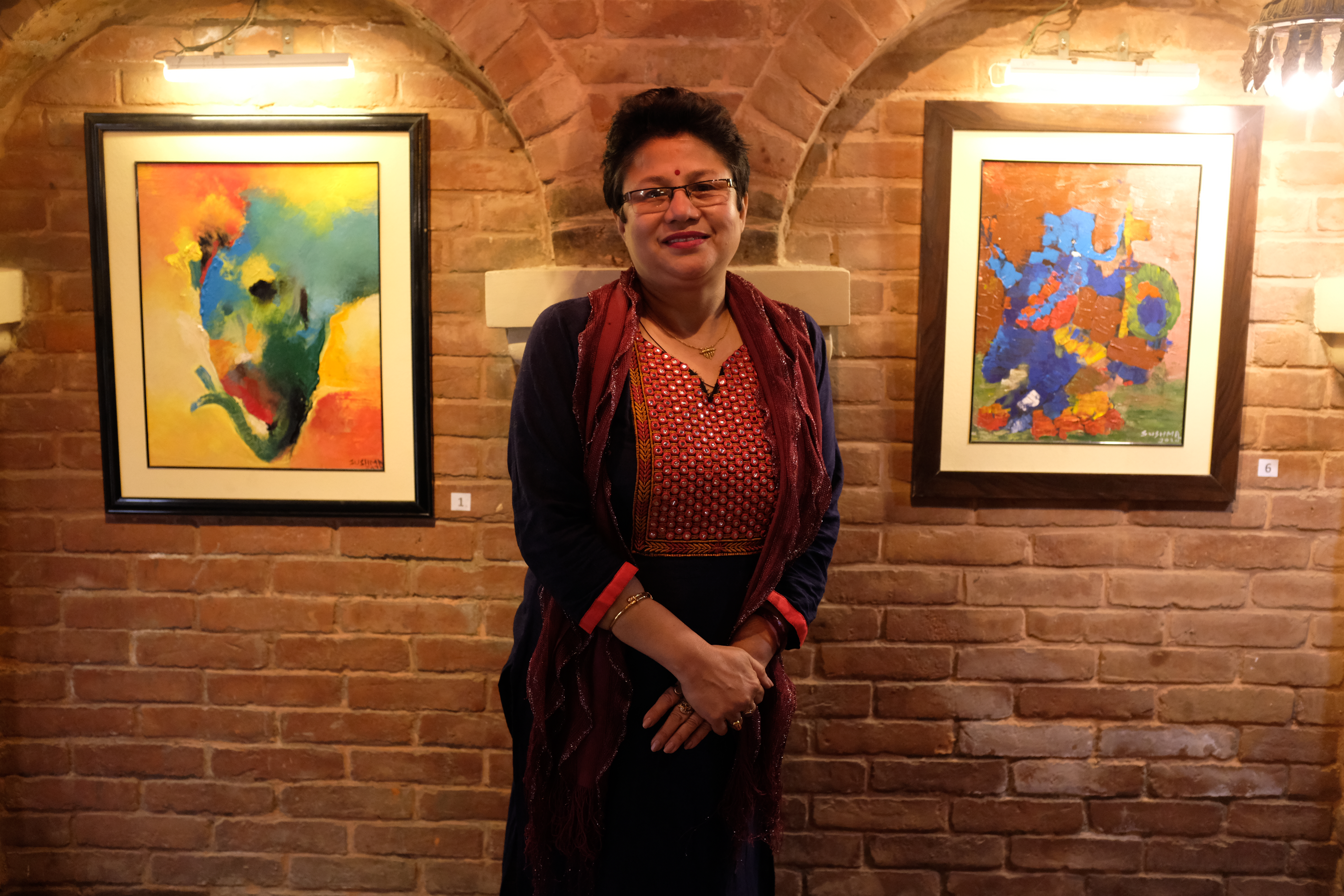Arts | Expecting a post-pandemic boom
Artists, despite the challenges brought by the pandemic, utilized this time at home to create new pieces of art. As a result, this Dashain we will be flooded with exhibitions, from virtual to in-person, and many of us will have the opportunity to showcase and sell our works.
One thing I’ve noticed is that a lot of great artworks have come out during the pandemic and that has helped us sustain the industry. A list of great books for art in general, and also sculpture art, painting, traditional art, ancient art, architecture, and books about creativity, scripture, and many more have hit the market. Sales have picked up as well, as art lovers and collectors can finally visit exhibitions.
During the pandemic, many galleries, especially in Thamel, couldn’t gather as many people as they did before. The works of artists who have already earned a name were easily sold, while those struggling to make their artworks stand out couldn’t do so.
Now with the Covid-19 restrictions being relaxed, we recently organized an exhibition at my gallery where we put up artworks by five different artists.The outcome was overwhelming; most of the pieces, including four of my own, were sold. Virtual exhibitions are also being organized and sales are going up. This was also visible at the recent exhibitions at Siddartha Art Gallery and Kala Premi.
The market is slowly waking up and, in this season of festivities, we are optimistic that more local artists will be able to showcase their works. We plan on working on more creations in this time of transition, so the next couple of months will see a flurry of bigger exhibitions.
Also read: Dashain: Then and now
We are also hopeful that more Nepali people will buy pieces of art this year. Before the pandemic, most consumers of this industry were foreigners as painting and sculptures are expensive for many middle-class Nepalis. With the travel ban, we lost most of our clients and that too contributed to the slow movement of the market in the past one and a half years.
There are, however, comparatively more Nepalis willing to buy locally created art than was the case pre-pandemic. We see that as progress and are working on creating an easy-to-use, accessible, and affordable platform for local people who want to buy works of art. We have found works of art such as chains and paperweights are more affordable to local clients.
My goal now is to open a private museum. Over the years, I’ve loved collecting paintings from different reputed artists. I realize there still aren’t many private museums in our country, and I plan on opening one soon.
Similarly, now, more and more colleges are recruiting fine arts teachers at the plus-two level. More youths have a space to pursue fine arts from a young age. We are also campaigning on incorporating art as a compulsory subject for all school students.
I hope after Dashain the market will continue to boom and more local artists can sell their work. In order to promote local art, our goal is ‘one house, one painting’. We believe if every house has at least one painting instead of printed posters, we will get a step closer to promoting art and appreciating the efforts of the artists.
My Vision for Nepal | To establish Nepal’s first global art village
To establish Nepal’s first global art village
Three ways to realize the vision:
1) Persuade the government to build the needed infrastructure.
2) Ask other countries to come establish their own divisions, as we have done in Lumbini.
3) Promote the culture of large sculptures that will draw global attention to Nepal.
My vision for Nepal stems from my early love for arts, fine arts especially.
Our house used to be filled with the paintings my grandfather and my father collected and tried to copy them. That’s how I initially learned to doodle. Soon, I was going to art classes. Growing up, I never faced financial hardships. But I had other challenges.
None of my relatives or friends was in this field and thus I struggled for inputs. But I was lucky to have great teachers. I am where I am today because of them.
I am a competitive person. I have till date won every national-level award related to fine arts in Nepal—except for the national award granted by the Nepal Academy of Fine Arts. I am determined to get my hands on that one too.
About my field, after 1950, Nepali artist started copying European artists and forgot their own culture, which was a disgrace. I think this owed to their schooling as many of them went abroad for art studies and came home with foreign ideas and styles. But what I see is more and more new Nepali artists determined to preserve Nepali customs and traditions in their paintings, which is something wonderful. One way I want to boost this tradition is by establishing a global arts village, which is also my vision for Nepal.
The global art village will provide a platform for cultural exchanges in all creative disciplines. It will be a community that blends art, culture, and consciousness and offer artists in-residence programs, classes, and special events and workshops.
The goal is to promote art and culture and in addition, provide special live-in facilities to local and global artists, musicians, poets, performers, and entrepreneurs and also to help them sustain themselves. Their creative inventions and research in turn would help the whole world.
The village, as I envision it, will have gardens and lawns for various recreational events. Moreover, it will have study rooms to be used by resident artists and students attending classes and workshops. Other attractions will be a studio, dance studio, music studio, accommodations, performance hall, exhibition space, seminar hall, playground, and a museum.
The village will help preserve arts and culture while also promoting tourism. I’ve always considered myself a patriot. The village will be my contribution to the country as it will create vital jobs and create other opportunities for national development.
I wish it to be a one-of-its kind town in Nepal, a town built with the help of modern technology somewhere in rural Nepal, but under the supervision of traditional and cultural experts. The global village will consist of every facility a town has, such as schools and universities, hospitals, housings, art galleries, movie halls, malls, carnivals, museums, art residence, and theme parks. The common motif of all will be the blended representational arts.
The place will be blessed by nature and when we add other manmade creations to it, it will come to be globally recognized. Wouldn’t it be wonderful for Nepal to be recognized as a vibrant place for arts and artists of all kinds?
Quick Questions:
Who is your favorite Nepali painter?
Sashi Shah, my teacher and mentor. He is an atheistic artist whose paintings almost come to life.
Since when have you been painting?
Since I was 13. At 18, I was competing at national-level tournaments.
One piece of advice you’d give to new artists.
Keep working hard and one day you will make it big. Do not run after money. If you are qualified, it will come naturally. I see new artists wanting to make money immediately. I am afraid they are jeopardizing their future.










